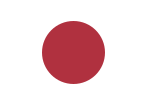Between 1910 and 1945, Korea was ruled as a part of the Empire of Japan. Joseon Korea had come into the Japanese sphere of influence with the Japan–Korea Treaty of 1876; a complex coalition of the Meiji government, military, and business officials
began a process of integrating Korea's politics and economy with Japan. The Korean Empire, proclaimed in 1897, became a protectorate of Japan with the Japan–Korea Treaty of 1905; thereafter Japan ruled the country indirectly through the Japanese Resident-General of Korea. Japan formally annexed Korea with the Japan–Korea Treaty of 1910,
without the consent of the former Korean Emperor Gojong, the regent of the Emperor Sunjong. Upon its annexation, Japan declared that Korea would henceforth be officially named Chōsen. This name was recognized internationally until the end of Japanese occupation. The territory was administered by the Governor-General of Chōsen based in Keijō (Seoul).
Japanese rule prioritized Korea's Japanization, accelerated the industrialization started during the Gwangmu Reform era of 1897 to 1907, built public works, and suppressed the Korean independence movement. The public works included developing railroads (Gyeongbu Line, Gyeongui Line, Gyeongwon Line, etc.) and improving major roads and ports that supported economic development. Averages for the annual GNP growth-rate of Chōsen were comparable to those in the Japanese naichi, ranging from 2.3% to 4.2% during the 25 years preceding the Second Sino-Japanese War. By the time of the Pacific War, industrial growth and output in Chōsen approached that of the naichi.Japanese rule over Korea ended on 15 August 1945 with the surrender of Japan in World War II. The armed forces of the United States and the Soviet Union subsequently occupied this region. Their division of Korea separated the Korean Peninsula into two different governments and economic systems: the northern Soviet Civil Administration, and the southern United States Army Military Government in Korea. These post-war administrative areas were succeeded respectively by the modern independent states of North Korea and South Korea. Japan officially relinquished the claims of Korea in the signing of Treaty of San Francisco on 28 April 1952.In 1965 the Treaty on Basic Relations between Japan and South Korea declared that previous unequal treaties between both countries, especially those of 1905 and 1910, were "already null and void"
at the time of their promulgation.Interpretations of Japanese rule over Korea remains controversial in Japan, North Korea, and South Korea.






